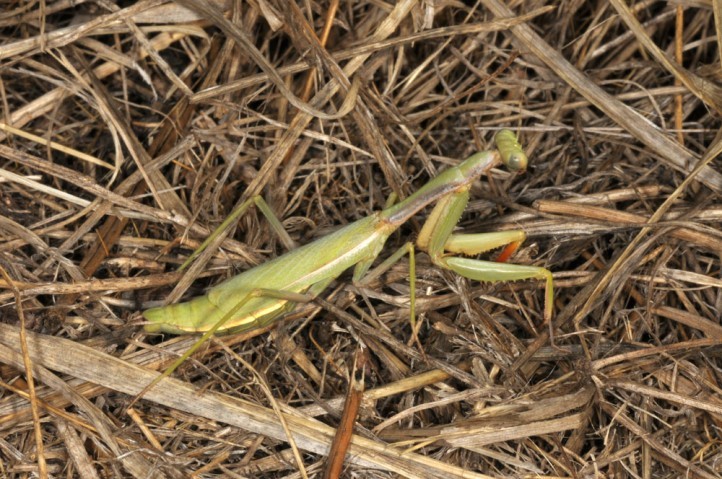Mediterranean mantis
(Iris oratoria)

Description
Iris oratoria, known by the common name Mediterranean mantis (or less frequently iris mantis), due to humans first studying it in lands around the Mediterranean Sea, is a species of praying mantis. Its range is expanding in the Middle East, Western Asia and the United States. Albania, Bulgaria, Brač Island, Korčula Island, France (Including Corsica), Greece (Including Ionian Islands, Crete, Cyclades Islands), Italy (Including Sardinia, Sicily), North Macedonia, Portugal, Spain (Including Balearic Islands), Yugoslavia (Including Serbia, Kosovo, Voivodina, Montenegro), North Africa (Morocco, Algeria,Tunisia, Libya, Egypt, North Chad), Cyprus, West, Central and South Asia (Asian Turkey, India, Israel, Iran, Jordan, Lebanon, Pakistan, Palestine, Syria, Turkestan),Non-native to the Southwestern United States(Arizona,California, Nevada, Texas. I. oratoria is very pale when young but matures to grass green, and grows to about 6.5 cm long. The species may be distinguished from Mantis religiosa and other mantids with which it shares a range and general size and shape by the red-orange spot on the ventral side of the fourth (second to last) abdominal segment; also, its cerci are shorter than those of M. religiosa.The species is distinctive in having two large startling violet-brown eyespots on its hind wings which are revealed when its wings are unfolded. The adult is more slender than Tenodera sinensis, more like Mantis religiosa in shape. Females have wings shorter than the abdomen, very similar to some Stagmomantis species, but easily distinguished if the hindwings are visible. Two novel I. oratoria survival strategies may have contributed to the expansion of this species beyond its original range, and its success in areas formerly occupied by other mantids such as Stagmomantis carolina. Firstly, this species is capable of parthenogenic reproduction when males are scarce. Secondly, additional I. oratoria nymphs may emerge from their oothecae in the second season after the egg case is produced, i.e., when their siblings are already grown and are producing their own offspring. At a field site in Davis, CA, S. limbata hatched earlier in the season than Iris oratoria, and Iris oratoria tended to persist longer into the year.
Taxonomic tree:







